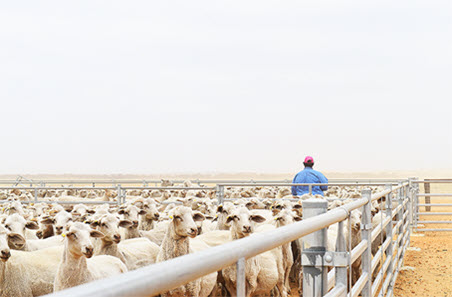Live animals top biosecurity risk
05 July 2018

When it comes to minimising the on-farm impact of infectious diseases, pests and weeds, nothing beats careful live animal management.
That’s the view of veterinary consultant Dr Bruce Jackson, who will be sharing on-farm biosecurity advice at the Red Meat Updates in Launceston on 28 July.
“Farm biosecurity basically means minimising the impact of diseases, pests and weeds on your farm business,” Bruce said.
“It’s important because those diseases, pests and weeds can increase your production costs, reduce your productivity, affect your market access and negatively impact animal welfare.
“It’s good practice to wash your boots if you’ve visited another farm, restrict non-farm vehicle access and things like that, but the biggest biosecurity risk by far is bringing a live animal onto your property.
“That’s what you must focus on first and the best thing you can do is isolate those animals for as long as possible.”
Bruce recommends isolating new animals for a minimum of 10 days to three weeks.
“A lot of diseases would incubate within 10 days,” he said.
“It would also give the animals time to get over any foot soreness from trucking, settle in a bit and then you could thoroughly assess them.”
Bruce said he had recently assisted a producer who had purchased sheep infected with footrot.
“The thing that saved the property was that the owner had kept the animals isolated on arrival,” Bruce said.
“We found the infected animals and were able to limit the spread by shuffling them back off the place.”
Bruce’s tips for minimising infection risk from live animals
- If possible, buy stock direct from another farm rather than through a saleyard.
- When buying direct, do your homework about the vendor – talk to your agent, neighbours, etc. to find out vendor’s reputation regarding stock health.
- Request an Animal Health Declaration.
- Transport stock yourself or insist contractor’s truck is clean.
- Give animals time to empty out in yards before moving to the paddock.
- Isolate new stock for 10 days to three weeks.
- Maintain your fences to keep straying animals out.
- Additional tips for sheep only:
- Walk stock off the truck through a foot bath.
- Give a quarantine drench and allow them to empty out for 12 hours in the yards.
- Check their OJD vaccination status and, if necessary, consider vaccination.
- Challenge any underlying disease by isolating stock in your wettest paddock with longest grass for at least 10 days, then check for footrot and lice.
Red Meat Updates
Red Meat Updates is a full-day conference event for anyone involved in the Tasmanian red meat industry – producers, processors, advisors, livestock agents, industry organisations, product suppliers and researchers.
Tickets are free for red meat producers, providing you attend representing your farm business, not any other organisation.
Full fee paying tickets are $300 ex-GST and are available for purchase online.
Click here to register or buy a ticket.
The Livestock Production Assurance (LPA) program is the Australian livestock industry’s on-farm assurance program covering food safety, animal welfare and biosecurity. It provides evidence of livestock history and on-farm practices when transferring livestock through the value chain.
To participate in this program producers must meet on-farm biosecurity management requirements, which can be subject to a random audit.
Check out these online biosecurity resources:


